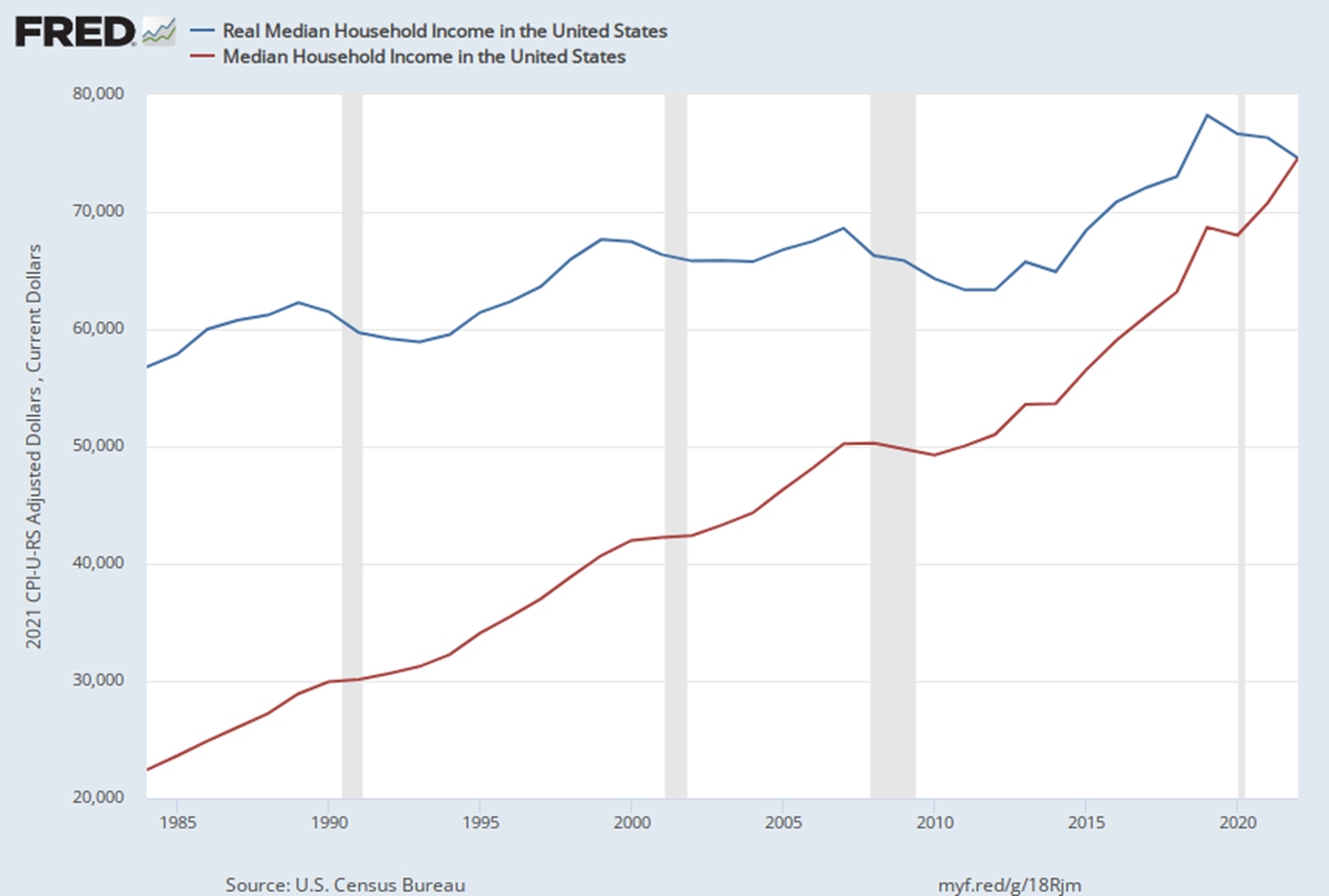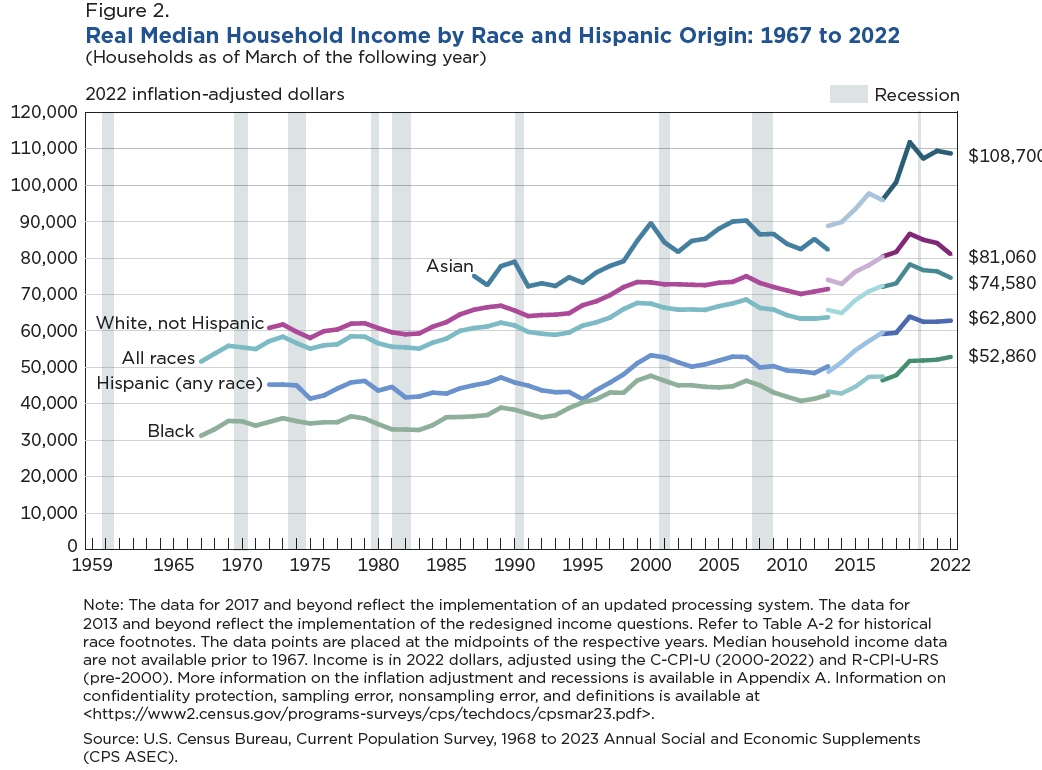Comments
- No comments found

In studies of voters, politicians, and elections, it’s common to hear a mention of the “median voter,” the voter who is in the center of the distribution. In this admittedly simplified model, if a politician can attract everyone from their side, plus the median voter, then that politician has a majority.
Similarly, the household with the median income is at the 50th percentile of the income distribution. If you want to know whether a majority of households are feeling better or worse about their economic situation, median household income is one plausible starting point.
Here’s median household income, measured two ways. The red line shows “nominal” income, which you can think of as the value of income in current dollars at that time. The blue line adjusts for inflation. Thus, the two numbers are identical in for 2022, because both measures are both using current dollars in that year.

The data is from an annual report of the US Census Bureau. The most recent version is Income in the United States: 2023, written by Gloria Guzman and Melissa Kollar, and published earlier this month.
The story for the short-run past period since the pandemic and through the annual data for 2022 is clear enough. Nominal wages are rising for the median household (red line rising), but the wages aren’t keeping up with inflation, so the real wage (blue line) is falling. Real wages peaked in the 2019 data, before the pandemic hit in early 2020.
For a longer-run perspective on median household income, here’s a figure from the Census Bureau Report, which shows income for the median US household as well as for various racial/ethnic groups.

Here, I’ll just point out that over the 55 years from 1967 to 2022, the median household income rose by a little less than 50%. Remember, income gains for the top 1% or 10% or 20% will affect the average level of income, but it doesn’t affect the median household at the 50th percentile of the income distribution. Over the last half-century or so, the median household has seen income gains of less than 1% per year.
Timothy Taylor is an American economist. He is managing editor of the Journal of Economic Perspectives, a quarterly academic journal produced at Macalester College and published by the American Economic Association. Taylor received his Bachelor of Arts degree from Haverford College and a master's degree in economics from Stanford University. At Stanford, he was winner of the award for excellent teaching in a large class (more than 30 students) given by the Associated Students of Stanford University. At Minnesota, he was named a Distinguished Lecturer by the Department of Economics and voted Teacher of the Year by the master's degree students at the Hubert H. Humphrey Institute of Public Affairs. Taylor has been a guest speaker for groups of teachers of high school economics, visiting diplomats from eastern Europe, talk-radio shows, and community groups. From 1989 to 1997, Professor Taylor wrote an economics opinion column for the San Jose Mercury-News. He has published multiple lectures on economics through The Teaching Company. With Rudolph Penner and Isabel Sawhill, he is co-author of Updating America's Social Contract (2000), whose first chapter provided an early radical centrist perspective, "An Agenda for the Radical Middle". Taylor is also the author of The Instant Economist: Everything You Need to Know About How the Economy Works, published by the Penguin Group in 2012. The fourth edition of Taylor's Principles of Economics textbook was published by Textbook Media in 2017.
Leave your comments
Post comment as a guest